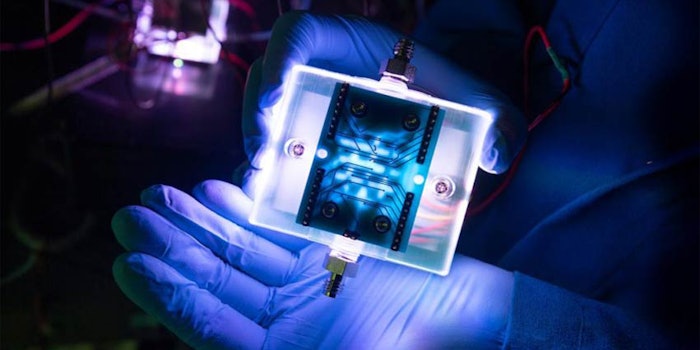
A prototype of an electric nose that mimics the capabilities of a human nose is being developed by Nosang Vincent Myung, a professor of engineering at the University of Notre Dame.
Related: SensoryCo Releases Scent Generator Technology
The electronic nose uses nanoengineered materials to tune the sensitivity and selectivity to function like a human nose.
The National Science Foundation’s Center for Bioanalytic Metrology awarded Myung and his team a grant to develop a Smart Process Analytical Technology System to monitor chemical and biochemical reactions in industrial and laboratory chemical processing applications in real-time.
According to Myung, the electronic nose can have a variety of applications, including detecting air pollutants and greenhouse gases, uncovering drugs and bombs, discovering cancer and bacterial infections, assessing food quality and identifying natural gas leaks.
Myung has stated that the chemical properties of gases affect the electrical properties of the sensing materials. By manipulating the size and shape of the nanoengineered materials, he and his team can make more precise sensors that function more efficiently and economically.
Myung said, “An electronic nose can be used for a variety of applications. For example, we can detect air pollutants or greenhouse gases. But we can also use it to uncover drugs and bombs, sniff out cancer and bacterial infections, as well as identify natural gas leaks and assess food quality.”
Want to know everything going on in flavor & fragrance? Sign up for P&F+'s newsletter. You can also follow along on Instagram and LinkedIn.










